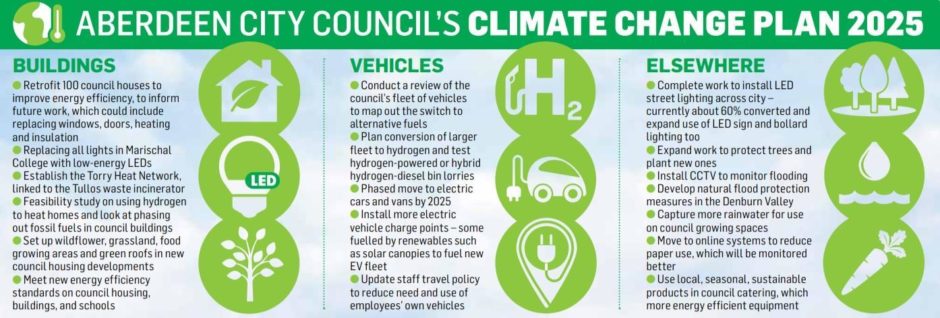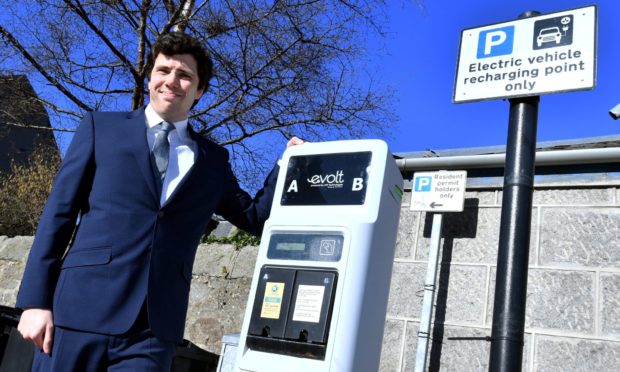Detailed plans behind a £100 million pledge from Aberdeen City Council to tackle climate change have come to light.
Flesh has been put on the bones of the multi-million-pound pledge from the budget talks in March 2020, outlining the first five years of work to reduce the local authority’s carbon footprint.
Council officials have been drawing up the plans for the last 12 months – which will draw upon council funding to be revisited next month as well as external sources.
The blueprint considers all council services from housing and schools to the council fleet and electric vehicle infrastructure, environmental protection and low energy bulbs in streetlights.
If approved, the council could soon launch a pilot scheme to replace doors, windows, boilers and insulation in 100 existing homes to gauge the cost of making its housing stock more energy efficient.
More buildings would join the 26 – including some sheltered housing – connected to combined heat and power networks, while some existing council homes would be hooked up to the Torry Heat Network, fuelled by the £150m rubbish incinerator in Tullos.
Less industrial solutions could include sowing wildflower meadows and planting trees in large public green spaces.
Meanwhile, replacing bulbs around council HQ at Marischal College and streetlights with LEDs is also being viewed as a first step to tackle emissions.
 Council business manager, Conservative Ryan Houghton, said: “It’s easy to announce big, flashy items but we need to ensure climate change is something we are consider every day, looking at the whole council estate and its responsibilities.
Council business manager, Conservative Ryan Houghton, said: “It’s easy to announce big, flashy items but we need to ensure climate change is something we are consider every day, looking at the whole council estate and its responsibilities.
“Every month we are seeing innovations in green projects around the world and we want to take advantage to help transform the city to achieve our climate change goals.
“This plan is about making clear that over the next five years, the council wants to lead on climate change, through reduction in emissions or work with partners to achieve other goals.
“This is the year of COP26 in Scotland and it is important we do what we can as local authority to help with climate change and the energy transition.
“This builds upon previous commitments but the council, the country and the world are on such a dramatic journey in transforming itself to be climate positive.”
One of the pricier ambitions, outlined in last year’s budget debate, is to convert – and source new – hydrogen and electric vehicles from bin lorries, to vans and cars to replace the fossil-fuelled fleet the council currently holds.
Its low emission fleet already comprises 20 electric vans, a sweeper and mini digger, three hydrogen cars, five diesel and hydrogen dual fuel vehicles and 40 hybrids.
But the council is considering converting 42 bin lorries to dual fuel diesel/hydrogen, while other larger vehicles will be moved onto hydrogen where possible too.
The council is moving to become a key player in the domestic and European hydrogen industry, with plans for a production plant in the city in the works.
The local authority recently secured funding for 15 of the world’s first hydrogen double decker buses, with the zero emission vehicles launched last month by First Aberdeen.
The proposals will be discussed at next week’s full council meeting – only seven days before members meet again to agree the budget for the coming financial year.
For the first time in the city, councillors will also agree a carbon budget in an effort to get to grips with its emissions.
The work could be viewed as a stepping stone towards the grander ambition set out by city leaders to achieve net zero emissions in Aberdeen by 2045.
More pressingly, the council must cut carbon emissions by at least 48% by 2o25, compared to levels in 2016.
Liberal Democrat group leader Ian Yuill said his group were considering the plan, but added: “It’s vital every single person, business and organisation in the UK and around the world plays their part in tackling climate change.”
